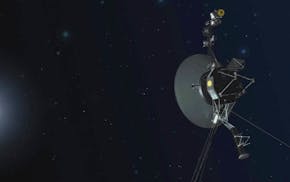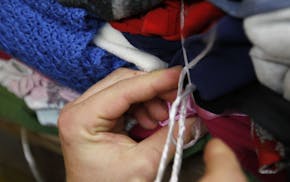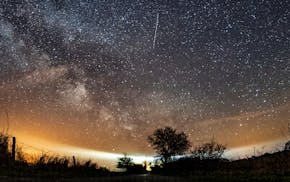He's trailed them and photographed them, mapped their family trees and counted their offspring, coming to identify individuals by their markings, sometimes even ascribing personalities based on behavior.
For much of the past 40 years, the dean of San Juan Island orca research has vacillated between hope and frustration about the future of Puget Sound's southern resident killer whales.
But the death in December of J32, an 18-year-old orca known as Rhapsody — who was pregnant with a nearly full-term female calf — is pushing Ken Balcomb closer to despair. "The death of this particular whale for me shows that we're at a point in history where we need to wake up to what we have to consider: 'Do we want whales or not?' " said Balcomb, who is with the Center for Whale Research.
With the 10th anniversary in 2015 of the government's decision to protect these orcas under the Endangered Species Act, the numbers don't look good.
The population of J, K and L pods has dropped from a high of 99 in 1995 to 77 in December, the lowest since 1985. No whale has given birth in more than two years — a first in the decades since the whales have been monitored. And the small number of female whales able and likely to give birth reduces the potential for a speedy rebound.
Scientists had hoped that young J32, who was just coming into adulthood, would help turn that pattern around for decades to come.
"We've not only lost her, but we've lost all of her future reproductive potential, which will potentially have an impact on the population," said Brad Hanson, killer-whale expert with the National Oceanic and Atmospheric Administration's Northwest Fisheries Science Center. "That's disconcerting."
The apparent cause of J32's demise — an infection spread by the death of her unborn calf — leads Balcomb to suspect the worst. He thinks the whales' chief source of food, chinook salmon, is in such short supply that J32 relied on its own blubber, releasing stored contaminants that harmed her immune and reproductive systems.
But officials overseeing whale recovery say it's too soon to say the situation is dire.
After all, said Will Stelle, West Coast administrator for NOAA Fisheries, Snake River sockeye were so depleted in 1992 that only one fish — known as Lonesome Larry — returned to spawn in Idaho's Redfish Lake. This year, after decades of work by scientists, 1,600 fish returned, nearly 500 of which were naturally spawned.
"That's not to say the issues around Snake River sockeye are the same — they're not," Stelle said. "But if you look in the rearview mirror, you'll see that in fact over the last decade we've made substantial progress in building the basic foundation for a long-term conservation strategy for southern residents. We're by no means there. But a decade ago we were in the dark ages.
"This is not the time to light our hair on fire, or to run about saying 'The sky is falling, the sky is falling,' " he said. "What is really important here is to take the long view."
But Stelle agreed that a central question remains: How much time do orcas have?
J32 was born into a family where adult females tended to die early. She was the first and, presumably, only calf of a 15-year-old whale that died two years after J32 was born. The matriarch of the family died a year after that at 37 — young for a species with a life span similar to humans.
Long before J32's carcass was towed ashore on the east side of Vancouver Island near Comox, British Columbia, scientists had begun to wrestle with the role that the decline of salmon may be playing in whale survival. "The reality is, the basic problem is food," Balcomb said.
These whales can eat sockeye and halibut, but overwhelmingly prefer fatty chinook from Puget Sound and Canada's Fraser River, distinguishing them from other fish by using sonar to sense differences in the animals' swim bladders. Puget Sound chinook numbers have dropped to about 10 percent of their historic high. They, too, are listed for protection under the Endangered Species Act.
When killer whales are hungry, research suggests, they may metabolize poisons built up in their fat over years, and expend energy they can't afford to lose if they have to avoid disturbances from boats and other traffic.
Yet scientists continue to disagree on how much of a role that has played in any deaths. Few whales wash up dead for them to study. Among those that have, only one — Rhapsody's uncle, J18 — offered clues that led some, but not all, to believe that hunger was a factor in his death.
Regardless of whether food availability helped trigger J32's death, government researchers share some of Balcomb's concerns about the state of the population.
"It's not so much that there are fewer reproductive-age females now than there used to be," said NOAA whale scientist Mike Ford, "but rather that they may not be giving birth as often as expected."

NASA hears from Voyager 1, the most distant spacecraft from Earth, after months of quiet

The House votes for possible TikTok ban in the US, but don't expect the app to go away anytime soon

Why you should donate clothing: It (probably) won't end up at the dump

Apple pulls WhatsApp and Threads from App Store on Beijing's orders

